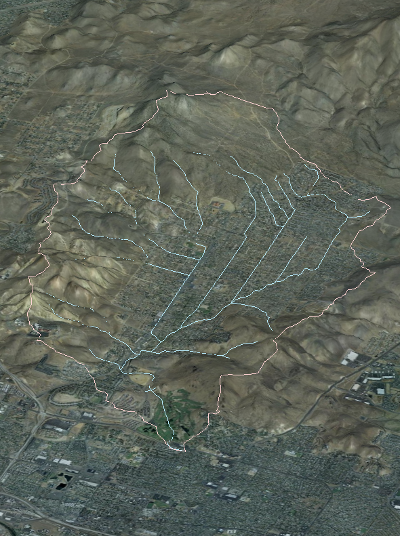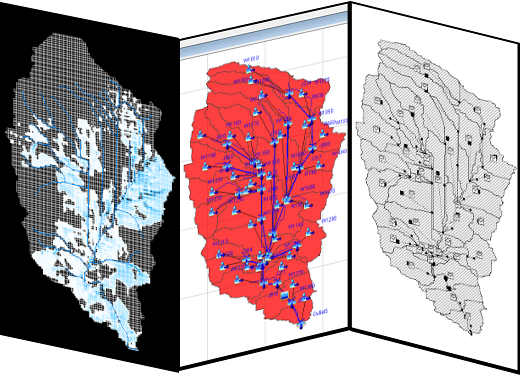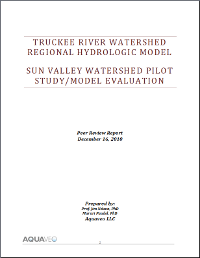Peer Review of Truckee River Pilot Study
Truckee River Flood Project, Reno, Nevada

Overview
- Review of hydrologic models
- Identify strengths and weaknesses of pilot study
- Make recommendations for regional model
Applied Software
- WMS (GSSHA, HEC-HMS, SWMM).
Problem
 The Truckee River Flood Project (TRFP) is seeking a public domain GIS-based hydrologic model for the Truckee River watershed that can be used as a tool to evaluate the effects of development, land use changes, and flood mitigation measures at both large (>100 acres) and small scales (~10 acres).
The Truckee River Flood Project (TRFP) is seeking a public domain GIS-based hydrologic model for the Truckee River watershed that can be used as a tool to evaluate the effects of development, land use changes, and flood mitigation measures at both large (>100 acres) and small scales (~10 acres).
TRFP did an initial review of a number of available hydrologic models for the purpose of developing a regional hydrologic model and based on advantages and disadvantages of each the search was narrowed to three models: GSSHA, HEC-HMS and SWMM5. A pilot study was conducted to compare and contrast these models for simulating rainfall-runoff response of a known storm event.
Aquaveo was contracted to carry out an independent peer review of the pilot study to verify that the formulation and procedures were adequate, and comment on the validity of its conclusions.
Solution
 The peer review addressed important aspects of model development such as whether the data used for the project were representative of the watershed characteristics, whether the model formulation followed recommendations outlined in literature, whether the model parameterization was reasonable, and if the values used were within acceptable ranges. The review also addressed the appropriateness of the calibration approach and the validity of the conclusions. Comments on how model limitations affect the objectives of the study were also provided.
The peer review addressed important aspects of model development such as whether the data used for the project were representative of the watershed characteristics, whether the model formulation followed recommendations outlined in literature, whether the model parameterization was reasonable, and if the values used were within acceptable ranges. The review also addressed the appropriateness of the calibration approach and the validity of the conclusions. Comments on how model limitations affect the objectives of the study were also provided.
Benefits
The review determined that the pilot study was well done using sound procedures and following recommendations in literature, and that all three models can be developed from the same data and calibrated to an observed event with similar effort. The review recommended using a regional-local modeling approach in order to leverage the strengths of a distributed model where changes are sensitive without having to model the entire watershed at a fine enough scale to capture them.






